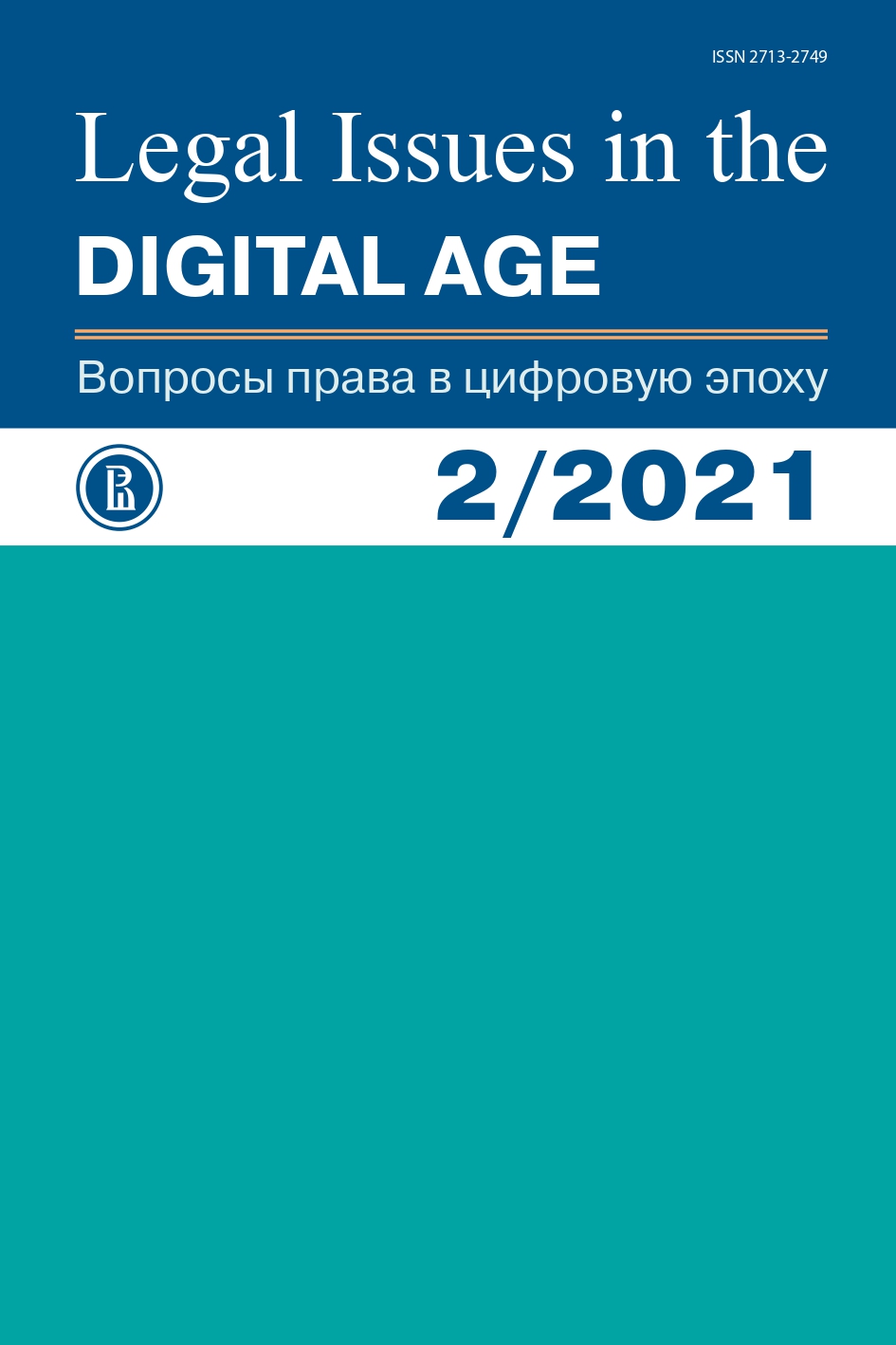Problems of Typology of Armed Conflicts in Cyberspace
Abstract
The development of information technologies in the modern world affects all spheres of human activity, including the sphere of military activities of states. The current level of development of military information technologies allows us to talk about a new fifth possible theatre of military operations, namely, cyberspace. The Tallinn Manual on International Law Applicable to Cyber Operations, developed in 2013 and updated in 2017 by experts from the NATO States, also confirms the likelihood of armed conflict in cyberspace. It is indisputable fact that cyber operations committed in the context of an armed conflict will be subject to the same rules of International Humanitarian Law that apply to such armed conflict. However, many cyber operations that can be classified as military operations may be committed in peacetime and are common cybercrimes. In such circumstances, it is imperative to distinguish between such cybercrimes and situations of armed conflict in cyberspace. Due to the fact, that there are only two types of armed conflict — international and non-international, this problem of differentiation raises the question of the typology of armed conflicts in relation to cyberspace. The main questions within the typology of cyber armed conflicts are: whether an international armed conflict can start solely as a result of a cyber-attack in the absence of the use of traditional armed force; and how to distinguish between ordinary criminal behaviour of individuals in cyberspace and non-international armed conflict in cyberspace? The purpose of this article is to provide answers to these urgent questions. The author analyses the following criteria that play a role in solving the above problems: criteria for assigning a cyber attack to a state and equating such a cyber-attack with an act of using armed force in a cyber armed conflict of an international character; and criteria for the organization of parties and the intensity of military actions in a non-international cyber armed conflict. Based on the results of this analysis, the author gives relevant suggestions for solving the above issues.
References
Backstrom A., Henderson I. (2012) New capabilities in warfare: an overview of contemporary technological developments and the associated legal and engineering issues in Article 36 weapons reviews. International Review of the Red Cross, vol. 94, no 886, pp. 483–514.
Brown G. (2011) Why Iran didn’t admit Stuxnet was an attack. Joint Force Quarterly, issue 63, pp. 70–73.
Dinniss H. (2012) Cyber Warfare and the Laws of War. New York: Cambridge University Press. 331 p.
Döge J. (2010) Cyber Warfare. Challenges for the Applicability of the Traditional Laws of War Regime. Archiv des Völkerrechts, no 4, pp. 486–501.
Droege C. (2012) Get off my cloud: cyber warfare, international humanitarian law, and the protection of civilians. International Review of the Red Cross, no 886, pp. 533–578 (in Russian)
Hathaway O., Crootof R. et al. (2012) The Law of Cyber-Attack. California Law Review, no 4, pp. 817–885.
Lin H. (2012) Cyber conflict and international humanitarian law. International Review of the Red Cross, no 886, pp. 515–531.
Lin H. (2010) Offensive Cyber Operations and the Use of Force. Journal of National Security Law and Policy, vol. 4, pp. 63–86.
Melzer N. (2017) International Humanitarian Law: A Comprehensive Introduction. Moscow: ICRC. 420 p. (in Russian)
Melzer N. (2011) Cyberwarfare and International Law. UNIDIR Resources Paper. 38 p.
Pictet J. (ed.) (1952) Geneva Convention (I) for the Amelioration of the Condition of the Wounded in Armies in the Field Commentary. Geneva: ICRC. 466 p.
Roscini M. (2010) World Wide Warfare — Jus ad bellum and the Use of Cyber Force. Max Planck Yearbook of United Nations Law, vol. 14, pp. 85–130.
Sassòli M., Bouvier A. (2008) How does Law protect in War? Cases, Documents and Teaching Materials on Contemporary Practice in International Humanitarian Law. Vol. I. Outline of International Humanitarian Law. Moscow: ICRC. 672 p. (in Russian)
Schmitt M. (2019) Wired warfare 3.0: Protecting the civilian population during cyber operations. International Review of the Red Cross, no 1, pp. 333–355.
Schmitt M. (ed.) (2017) Tallinn Manual 2.0 on the International Law Applicable to Cyber Operations. Cambridge: University Press. 598 p.
Schmitt M. (2014) Rewired warfare: rethinking the law of cyber attack. International Review of the Red Cross, no 893, pp. 189–206.
Schmitt M. (2012) Classification of cyber conflict. Journal of Conflict and Security Law, no 2, pp. 245–260.
Schmitt M. (2002) Wired warfare: Computer network attack and jus in bello. International Review of the Red Cross, no 846, pp. 365–399 (in Russian)
Schmitt M. (1999) Computer Network Attack and the Use of Force in In-ternational Law: Thoughts on a Normative Framework. Columbia Journal of Transnational Law, vol. 37, pp. 885–937.
Streltsov A. A. (2014) Main development directions of the international law of armed conflicts in relation to cyberspace. Pravo i gosudarstvo: teoriya i praktika, no 3, pp. 75–88 (in Russian)
Sun Tzu (2016) The Art of War. Moscow: AST, 220 p. (in Russian)
Tsagourias N. (2012) Cyber attacks, self-defence and the problem of attribution. Journal of Conflict and Security Law, no 2, pp. 229–244.
Zhang L. (2012) A Chinese perspective on cyber war. International Review of the Red Cross, no 886, pp. 801–807.
Authors who publish with this journal agree to the Licensing, Copyright, Open Access and Repository Policy.










